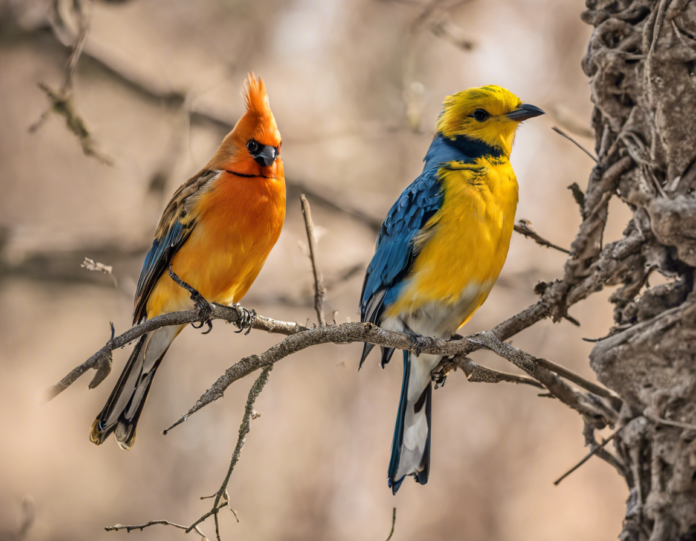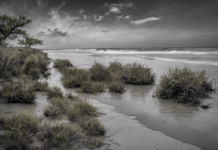Introduction
Bird watching, also known as birding, is a popular pastime for nature enthusiasts, wildlife lovers, and outdoor enthusiasts. It offers a unique opportunity to connect with nature, observe diverse bird species in their natural habitats, and appreciate the beauty of these feathered creatures. In this comprehensive guide, we will delve into the world of bird watching adventures, focusing on two fascinating bird species: the majestic bald eagle and the colorful hummingbird. We will explore the unique characteristics, behaviors, habitats, and conservation efforts related to these birds, providing valuable insights for both novice and experienced bird watchers.
The Majestic Bald Eagle
The bald eagle (Haliaeetus leucocephalus), with its striking white head and tail set against a dark brown body, is a symbol of strength, freedom, and resilience. This iconic bird of prey is primarily found in North America, particularly near large bodies of water where it can hunt for fish, its primary food source. Let’s delve into some key aspects of the bald eagle’s biology and behavior:
Physical Description:
The bald eagle is a large bird with a wingspan that can reach up to 7 feet, making it one of the largest birds of prey in North America. Adult bald eagles have distinctive white heads and tails, yellow beaks, and powerful talons for catching and carrying prey.
Habitat:
Bald eagles prefer to nest near rivers, lakes, and coastal areas where they can find abundant fish for hunting. They build large nests, known as eyries, high up in tall trees or on cliffs, providing them with a strategic vantage point for hunting and protection.
Behavior:
Bald eagles are skilled hunters, using their keen eyesight to spot fish in the water from great heights before swooping down to catch them with their sharp talons. They are also known for their impressive aerial displays during courtship, where they engage in spectacular mid-air acrobatics.
Conservation Status:
While the bald eagle population has made a remarkable recovery in recent decades due to conservation efforts and the banning of harmful pesticides like DDT, they still face threats from habitat loss, pollution, and illegal poaching. It is essential to continue supporting conservation initiatives to ensure the long-term survival of this iconic species.
Observing Bald Eagles:
To observe bald eagles in the wild, consider visiting national parks, wildlife refuges, or coastal areas known for their bald eagle populations. Look for these majestic birds near bodies of water where they hunt for fish and scan the skies for their distinctive white heads and tails.
The Colorful Hummingbird
The hummingbird is a tiny bird known for its iridescent plumage, rapid wingbeats, and agile flight patterns. With a diverse range of species found in the Americas, hummingbirds are beloved for their beauty and unique behaviors. Let’s explore some fascinating facts about these diminutive yet captivating birds:
Physical Description:
Hummingbirds are among the smallest bird species, with some measuring only a few inches in length. They have brilliant iridescent feathers that shimmer in the sunlight, allowing them to sparkle like jewels as they flit from flower to flower.
Feeding Behavior:
Hummingbirds have a high metabolism and need to feed frequently to sustain their energy levels. They primarily consume nectar from flowers using their specialized long, tubular tongues to extract the sweet liquid. In addition to nectar, they also feed on insects for protein.
Migration:
Some hummingbird species are known for their remarkable long-distance migrations, traveling thousands of miles between their breeding and wintering grounds. These tiny birds navigate vast distances with precision, relying on their innate sense of direction and environmental cues.
Reproduction:
Hummingbirds are known for their elaborate courtship displays, where males show off their vibrant plumage and perform impressive aerial maneuvers to attract females. Once a female selects a mate, she builds a small cup-shaped nest using plant fibers and spider silk to raise her chicks.
Conservation Concerns:
Hummingbirds face threats from habitat loss, climate change, pesticide use, and collisions with man-made structures like windows and communication towers. Planting native flowers, avoiding pesticide use, and reducing light pollution can help protect these delicate birds and their habitats.
Attracting Hummingbirds:
To attract hummingbirds to your garden, consider planting a variety of nectar-rich flowers such as trumpet vines, bee balm, and salvia. Providing a hummingbird feeder filled with a solution of four parts water to one part sugar can also entice these tiny birds to visit and feed.
Conclusion
Bird watching adventures offer a unique opportunity to immerse oneself in the beauty and wonder of the natural world. By exploring the fascinating lives of birds like the bald eagle and the hummingbird, we can gain a deeper appreciation for the intricacies of avian biology, behavior, and conservation. Whether observing a bald eagle soaring majestically through the sky or marveling at the iridescent colors of a hummingbird as it hovers near a flower, bird watching provides a sense of connection with the natural world that is both enriching and inspiring.
Frequently Asked Questions (FAQs)
1. How can I get started with bird watching?
To start bird watching, invest in a good pair of binoculars, a field guide to birds, and consider joining a local birding group or organization for guidance and support.
2. What time of day is best for bird watching?
Early morning and late afternoon are ideal times for bird watching, as many bird species are most active during these hours.
3. How can I attract birds to my backyard?
Create bird-friendly habitats by providing food, water, shelter, and nesting sites such as bird feeders, baths, birdhouses, and native plants.
4. What should I wear and bring when going bird watching?
Wear neutral-colored clothing for camouflage, comfortable footwear for walking, and bring essentials like water, sunscreen, insect repellent, and a notebook for recording observations.
5. Where are the best places to go bird watching?
National parks, wildlife refuges, wetlands, forests, coastal areas, and botanical gardens are excellent locations for bird watching due to their diverse habitats and bird populations.
6. How can I identify birds I see while bird watching?
Use a field guide, birding apps, online resources, and birding websites to help you identify bird species based on their size, color, shape, behavior, and habitat.
7. Are there specific birding ethics I should follow?
Practice ethical bird watching by respecting wildlife, observing from a distance, staying on trails, avoiding disturbing nesting sites, and following local regulations and guidelines.
8. What are some common mistakes to avoid while bird watching?
Avoid making loud noises, sudden movements, getting too close to birds, disturbing habitats, feeding birds inappropriate food, and engaging in unethical bird photography practices.
9. How can I contribute to bird conservation efforts?
Support conservation organizations, participate in citizen science projects like bird counts, volunteer for habitat restoration initiatives, and advocate for policies that protect birds and their habitats.
10. Why is bird watching important for conservation and biodiversity?
Bird watching promotes awareness, appreciation, and understanding of birds and their habitats, fostering a sense of stewardship and conservation action to protect these valuable and fragile ecosystems for future generations.









